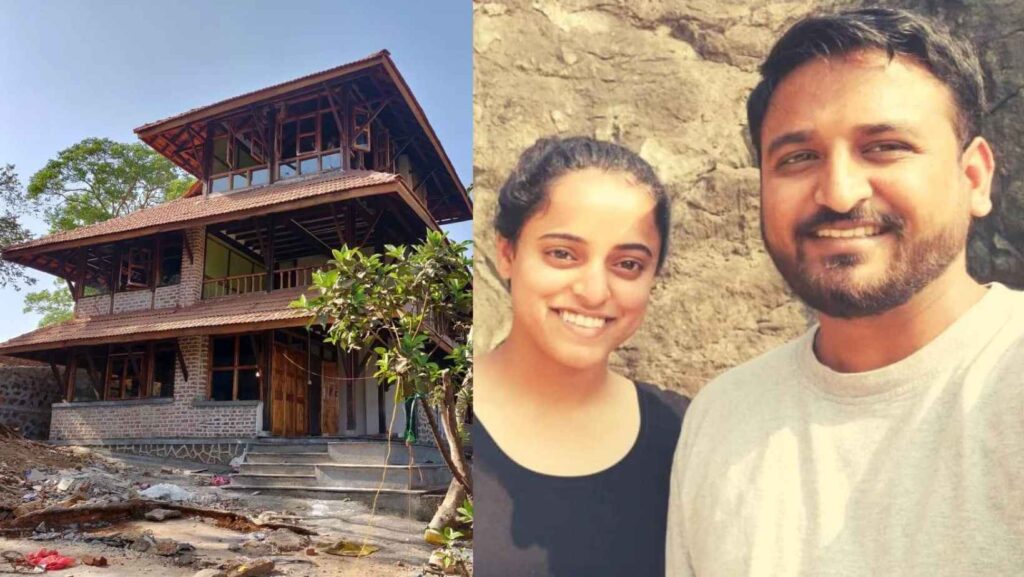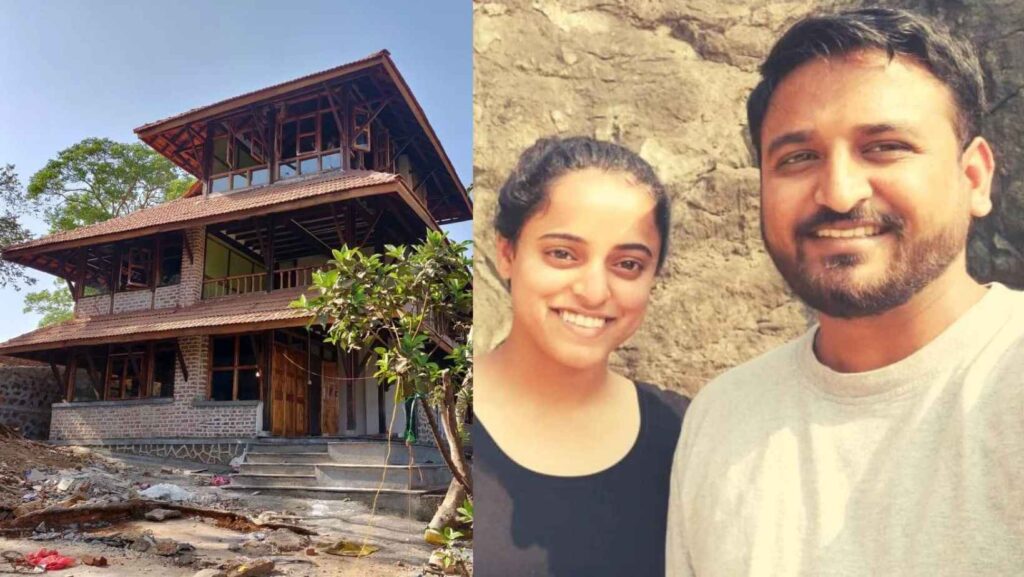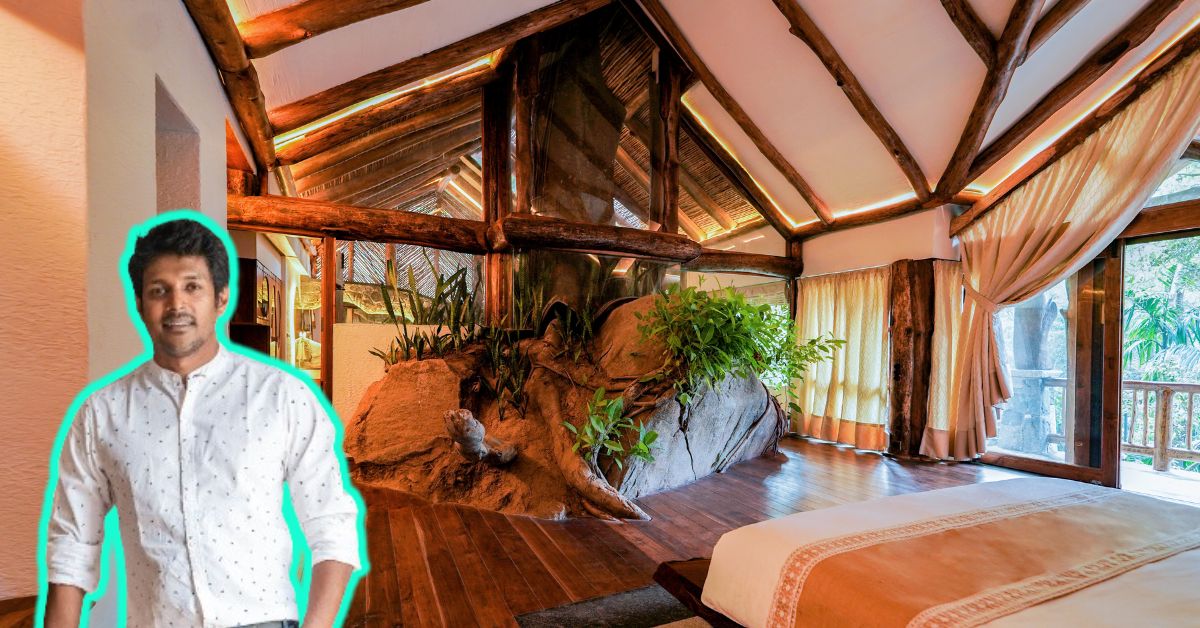Dhruvang Hingmire and Priyanka Gunjikar defy the conventional norms of architecture. Based in Pune, this dynamic couple not only construct homes with their own hands but also practice an architecture that prioritizes natural materials and local labor.
Their architecture firm, aptly named ‘Building in Mud,’ reflects their commitment to using all-natural materials sourced locally from the construction site itself. Eschewing cement entirely, they opt for lime plaster as a binding agent, ensuring that their constructions remain robust and naturally cool, even in sweltering temperatures. Unlike cement, which hinders the breathability of walls and leads to excessive heat retention, lime plaster promotes ventilation and thermal insulation.
“We strive to strike a balance between ecological sustainability and meeting the client’s preferences,” explains Dhruvang. “For instance, in a project near Bhor, the client desired a rustic appearance for the house, so we omitted interior plastering. Conversely, in a project at Kamshet, where the client sought a low-maintenance home, we opted for lime plasters over environmentally harmful cement. Lime is not only recyclable but also offers superior thermal insulation.”

Both Dhruvang and Priyanka were deeply influenced by an eco-conscious senior architect, Malaksingh Gill, during their time at Rachna Sansad Academy of Architecture in Mumbai. Gill, a disciple of the renowned Laurie Baker, instilled in them a passion for eco-friendly and culturally sensitive architecture.
Their journey toward unconventional architecture began during a college trip to Satara in Maharashtra, where they encountered an elderly woman living alone in a decrepit house. Struck by their inability to alleviate her plight as students, Dhruvang resolved to pursue a path focused on building homes rather than conforming to traditional architectural practices.
Every project undertaken by Priyanka and Dhruvang begins with a thorough assessment of the location and its surroundings. They meticulously study existing houses, available materials, procurement sources, and construction techniques.
Typically, the core structure of their projects takes around four months to complete, followed by an additional four to five months for interior finishing. Through their innovative approach to architecture, this duo is reshaping the landscape of sustainable construction, one natural material at a time.



